Photo Laser Engraving on Different Materials
Photos are like time capsules that allow us to capture and preserve our most precious moments. In the past, capturing these moments meant using cameras and printing the images on paper. This traditional method of photo printing has its charm, but technology has brought us an exciting advancement.
Now, with the advent of laser engraving machines, we are no longer limited to paper. With photo laser engraving, we can etch images onto wood, metal, glass, and stone. This technique offers a unique way to personalize and display memories, suitable for both personal gifts and professional products.
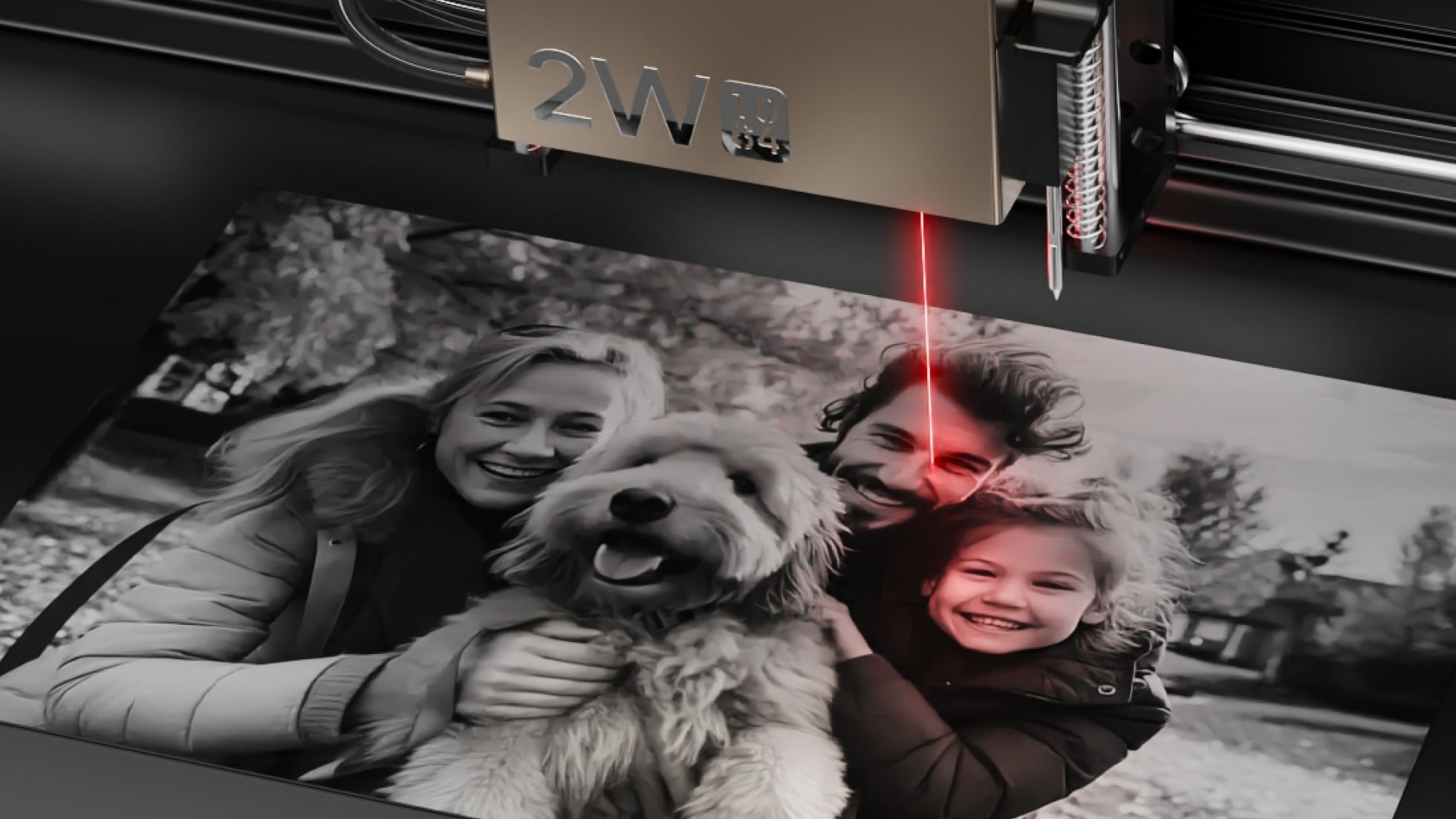
This article focuses on the art of photo engraving. It explains how you can laser engrave your photos onto different materials and daily-use objects.
In This Article
- Common Materials for Photo Laser Engraving
- How to Laser Engrave a Photo?
- Choosing the Right Photo Laser Engraving Machine
- Conclusion
Common Materials for Photo Laser Engraving
The key difference between photo laser engraving and traditional photo printing lies in the materials used. Traditional methods involve printing colored inks onto paper. In contrast, photo engraving lets you etch images into a diverse array of materials – whether it’s a family portrait on a wooden plaque, a cherished memory on a metal keychain, or a beloved pet's image on a stone coaster.
Let’s take a look at some common materials, best suited for photo laser engraving:
Photo Engraving on Wood
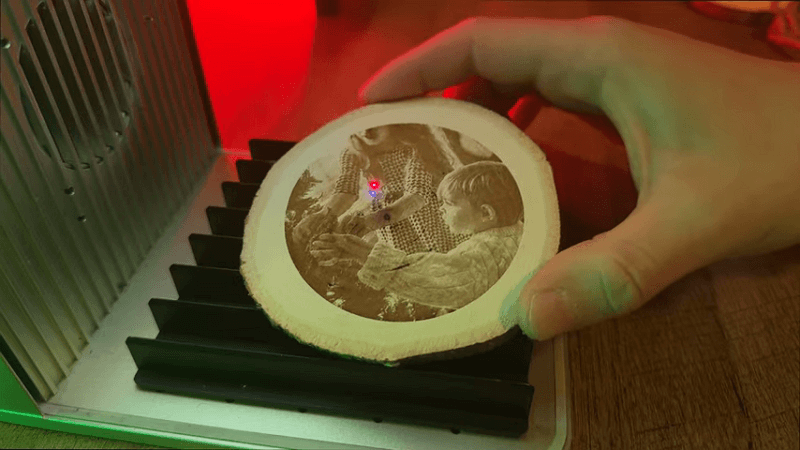
Wood, a solid, natural material, is known for its durability and unique aesthetic appeal. It’s ideal for picture engraving. The distinct advantage of wood is its availability in a variety of hues and patterns. Each type of wood brings a different texture to the engraving; there’s a range of shades from light to dark brown.
Laser engraving wood requires careful consideration for power settings. For instance, softwoods burn quicker and thus need lower power settings for a successful engrave. In contrast, hardwoods, known for their smoothness, demand higher power for clear and detailed engravings.
Both diode and CO2 lasers work well for wood, but due to the material’s susceptibility to laser burns, we recommend using Air Assist. You may also apply masking to protect the wood surface from burns.

XTOOL F1
UHD Diode Laser Engraver for Photo Engraving
With its 0.00199mm motion accuracy and powerful algorithm, f1 brings unparalleled realism to photo engraving.
Learn MoreCreative Ideas for Wood Photo Engraving
Wooden items offer a natural charm, which makes them excellent choices for personalized picture engravings. Some creative ideas include:
- Family Portraits on Wooden Plaques: These make for elegant wall hangings or desk ornaments.
- Customized Wooden Keychains: Personalize these small items with photos or special dates for a unique touch.
- Wooden Jewelry Boxes with Engraved Lids: Add a sentimental photo to create a unique and heartfelt gift.
Photo Engraving on Metal
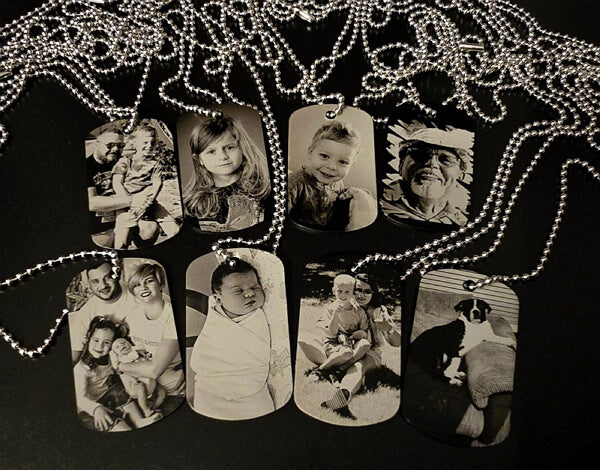
Metals like stainless steel, brass, and copper are popular choices for photo engraving. The engraving on these metals typically appears as contrasting shades, ranging from subtle grays to deep blacks. Notably, color laser engraving is possible on some metals (a result of oxidation during the engraving process).
For metal laser engraving, powerful fiber lasers are common in industries. Diode or infrared lasers can also be employed for photo engraving on metals. However, CO2 lasers are generally not suitable for bare metals as their wavelength gets reflected. They can be used on coated metals.

XTOOL F1
UHD Diode Laser Engraver for Photo Engraving
With its 0.00199mm motion accuracy and powerful algorithm, f1 brings unparalleled realism to photo engraving.
Learn MoreExamples of Photo Engraving on Metal Products
Metal photo engravings can be applied to a variety of products, serving both aesthetic and functional purposes:
- Personalized Metal Keychains: Engrave photos for a personal touch on an everyday item.
- Engraved Metal Plaques: Perfect for awards, memorials, or decorative pieces.
- Photo-Engraved Jewelry: Create unique pendants or bracelets with special photos.
Photo Engraving on Glass
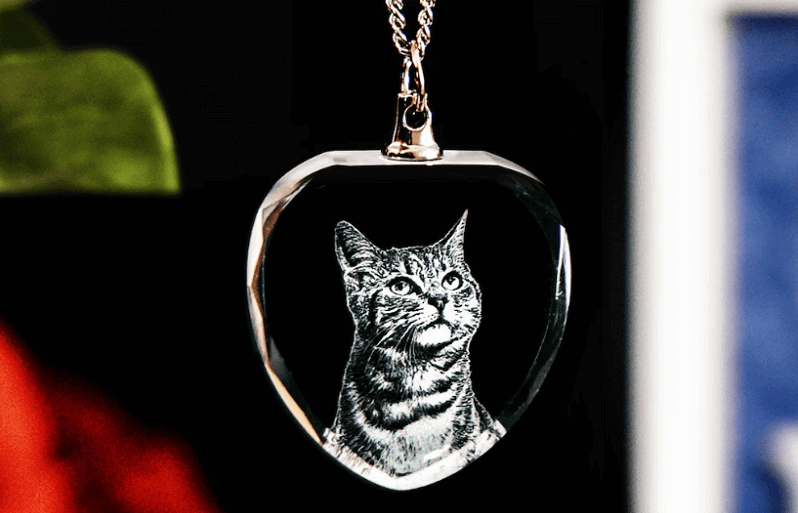
When engraved, glass showcases a mix of white and transparent shades, creating a stunning visual effect. This makes glass an excellent medium for preserving cherished photos elegantly and timelessly.
Not all laser machines are suitable for glass engraving. CO2 lasers are the best choices for this material. However, for optimal results in glass engraving, a high-quality image is essential. You need to properly adjust the brightness and resolution so that the final image has all the critical details.
Suitable Products for Glass Photo Engraving
You may create a range of personalized items with glass engraving, like:
- Glass Photo Frames: Ideal for displaying cherished memories in homes or offices.
- Customized Glass Awards: Perfect for commemorating achievements with personalized images.
- Personalized Glassware: Engrave special photos on items like wine glasses or vases for a unique gift.
Photo Engraving on Stone

Stone engraving was once a challenging task with manual tools; now it’s much simpler with laser engravers. Think of creating lasting memorials, decorative pieces, or unique gifts with stones. Marble, slate, and granite are top choices for stone photo engraving.
Given the hardness of stone, powerful lasers are typically required for effective engraving. CO2 lasers are the preferred choices for their efficiency and precision. Diode lasers can also be used, although they might be less effective and may require multiple passes.
For darker stones, like slate or black marble, make sure to invert the image so that the photo appears with the correct contrast and visibility.
Photo Engraving on Scratch Paper

image credit: ImagR
Scratch paper, known for its unique colorful appearance, is another exciting medium for photo engraving. The paper normally has a black or dark surface coating over a brightly colored layer underneath. When engraved, the top layer is scratched off, revealing the vibrant hues beneath.
Since scratch paper is more delicate than materials like wood or metal, a lower power setting is sufficient to achieve the desired engraving effect without damaging the paper. You may use diode or CO2 lasers to engrave it.
How to Laser Engrave a Photo?
Laser engraving photos is slightly different than traditional photo printing. It involves more than just transferring an image; it requires careful preparation and specific settings adjustments.
Here’s a step-by-step guide to ensure successful photo laser engraving:
Step 1: Prepare the Photo for Laser Engraving
Typically, realistic photos are in color formats like PNG or JPG, which are raster formats. However, for laser engraving, a bitmap image (BMP) is needed.
A bitmap image is a pixel-based image format, where each dot (pixel) corresponds to a specific point on the material being engraved. It is more likely a black-and-white image with some grey shades. Darker regions correspond to in-depth engraving while lighter/white indicate less or no engraving.
You can either convert your existing bitmap with online software like Imag R or use laser control software, such as XCS. There we have multiple bitmap modes and settings to make the photo ready for engraving.
Step 2: Laser Engraving Photo Settings

Different laser engravers have varying settings, but there are common features across most machines. Using the xTool F1 as an example, here are the key parameters to set before engraving:
Laser Type: Choose between a diode and an IR laser (for metals), depending on the material you are working with.
Dot Duration: This refers to the time the laser spends at each point, measured in microseconds. It affects the overall processing time and the darkness of the engraving.
Power: This ranges from 1 to 100%, affecting the depth and darkness of the engraving. Higher power results in deeper engravings.
DPI: This indicates the number of image pixels per inch, ranging from 1 to 1270. The higher the DPI, the finer engraving results you will get.
Pass: More passes mean deeper engraving marks.
Bitmap Mode: The xTool F1 offers seven image modes. Jarvis mode is generally recommended for infrared light and grayscale mode for blue light.
For F1, we also have pre-defined material settings, do check that before engraving and choose the appropriate material from the list.
Step 3: The Engraving Process
Once you have prepared your photo and configured the laser engraving settings, begin the engraving process. The time it takes to complete the engraving will depend on the material, your power settings, and design complexity.
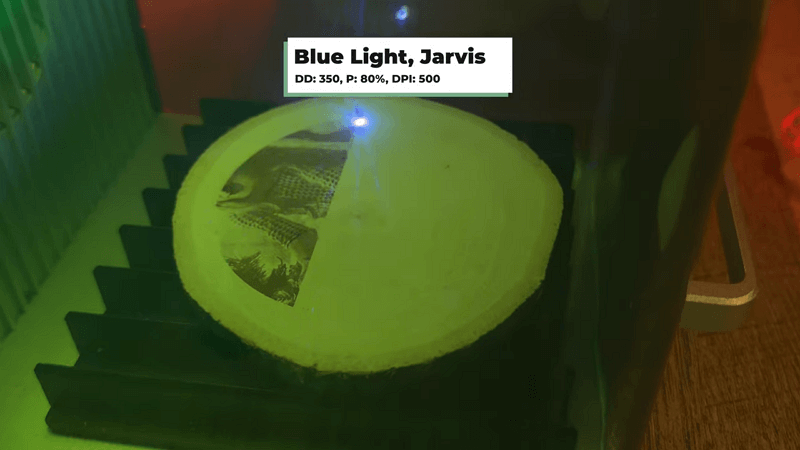
For instance, softer materials like wood may engrave faster than harder materials like metal or stone. The more detailed and intricate your photo is, the longer the engraving will take. Similarly, if you’ve set a higher DPI value or number of passes, it will likely take more time.
Choosing the Right Photo Laser Engraving Machine
When in the market for a photo laser engraving machine, several key factors should guide your decision: power, material compatibility, speed, and affordability.
The ideal laser engraver should possess enough power to handle a variety of common materials, including those previously discussed. It should operate efficiently and be priced reasonably to offer good value.
A prime example of such a machine is the xTool F1. This engraver is well-suited for small businesses, DIY enthusiasts, or hobbyists looking to personalize items through engraving.
xTool F1: The Quickest Photo Laser Engraver
xTool F1 is the market’s quickest laser engraver. It can engrave at 4000 mm/s, a speed that’s comparable to industrial fiber lasers. This speed is largely attributed to its advanced galvo technology, which sets it apart from other diode lasers.
Compactness and Portability
Not only is the xTool F1 fast, but it’s also designed for convenience. Weighing just 4.6 kg, this compact and portable machine can be easily carried and used for on-the-spot engraving, making it a versatile tool for various settings.
Innovative Features for Detailed Engraving
One of the key features of the xTool F1 is its unique dot matrix algorithm used in bitmap engraving. Coupled with F-theta lenses, it gives exceptional detail and realism in photo engravings.
Dual Laser Technology
The xTool F1 incorporates both a 10W diode laser (455nm) and a 2W IR laser (1064nm). The diode laser is for engraving on all common materials. While the IR laser is specifically tailored for metal photo engraving.
Safety and Ease of Use
Safety is a paramount feature of the xTool F1. It comes with an enclosed laser filtering lid, which not only blocks harmful laser rays but also helps in managing fumes.
The machine has a manual knob for adjusting the laser head, but it also automatically adjusts based on the thickness of the material being engraved.
Rotary Engraving Support
For those interested in engraving rotary objects like cups or tumblers, the xTool F1 supports the RA2 Pro rotary attachment, expanding its range of applications.
Conclusion
Photo engraving is an exceptional way to personalize items and create memorable keepsakes. While it may not be as straightforward as traditional printing, the advent of laser engravers like the xTool F1 has made this process much more accessible.
If you're interested in exploring the world of photo laser engraving, consider the xTool F1 as your go-to machine. It’s a small investment that opens up a door of creative possibilities, turning ordinary objects into personalized treasures. Discover more about the xTool F1 and how it can elevate your engraving projects.


